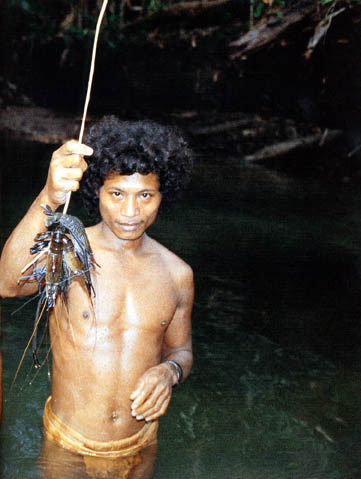|
Hypolycaena Erasmus
''Hypolycaena erasmus'' is a butterfly in the family Lycaenidae. It was described by Henley Grose-Smith in 1900. It is found on the Bismarck Archipelago and Halmahera Halmahera, formerly known as Jilolo, Gilolo, or Jailolo, is the largest island in the Maluku Islands. It is part of the North Maluku province of Indonesia, and Sofifi, the capital of the province, is located on the west coast of the island. Hal .... References Butterflies described in 1900 Hypolycaenini Taxa named by Henley Grose-Smith {{Theclinae-stub ... [...More Info...] [...Related Items...] OR: [Wikipedia] [Google] [Baidu] |
Horace Knight
Horace Knight (floruit, fl. 1884–1920) was a natural history illustrator with the British Museum, noted particularly for his images in ''The Moths of the British Isles'' by Richard South. Biography Knight, who lived at 16 Dafforne Road, Upper Tooting, had a son, Edgar S. Knight, who also illustrated. Horace Knight retired from the British Museum in 1917 due to illness, at which point he had been producing drawings for William Lucas Distant for over 30 years, working for the chromolithography, chromo-lithographers and letterpress printing, letter-press printers, West, Newman & Co. of Hatton Garden. Horace and his brother E. C. Knight (illustrator), E. C. Knight worked together at West, Newman & Co. His work appeared in *Henry C. Lang : ''Rhopalocera Europae descripta et delineata / The butterflies of Europe described and figured.'', ''London, L. Reeve'' 1884 *John Henry Leech/Richard South: ''Butterflies from China, Japan and Corea'', ''Transactions of the Entomological Soc ... [...More Info...] [...Related Items...] OR: [Wikipedia] [Google] [Baidu] |
New Ireland (island)
New Ireland (Tok Pisin: ''Niu Ailan'') or Latangai, is a large island in Papua New Guinea, approximately in area with 120,000 people. It is named after the island of Ireland. It is the largest island of New Ireland Province, lying northeast of the island of New Britain. Both islands are part of the Bismarck Archipelago, named after Otto von Bismarck, and they are separated by Saint George's Channel. The administrative centre of the island and of New Ireland province is the town of Kavieng located at the northern end of the island. While the island was part of German New Guinea, it was named Neumecklenburg ("New Mecklenburg"). Geography The island is part of the Bismarck Archipelago and is often described as having the shape of a musket. New Ireland is surrounded by the Bismarck Sea in the southwest and by the Pacific Ocean in the northeast. For much of its in length, the island's width varies between less than to , yet the central mountainous spine is very steep an ... [...More Info...] [...Related Items...] OR: [Wikipedia] [Google] [Baidu] |
Henley Grose-Smith
Henley Grose-Smith (1833–1911) was an English entomologist who specialised in Lepidoptera. Grose-Smith described many new taxa of butterflies from his own collections and those of Walter Rothschild. His collections were sold to James John Joicey in 1910. Most of his type specimens are in the Natural History Museum, London, Natural History Museum London Publications Partial list *1887-1902 with William Forsell Kirby ''Rhopalocera exotica; being illustrations of new, rare, and unfigured species of butterflies''.London :Gurney & Jackson,1887-1902complete text and plates*1887 Description of six new species of Butterflies captured by Mr. John Whitehead at Kina Balu Mountain, North Borneo, in the collection of Mr. H. Grose Smith ''Ann. Mag. nat. Hist.'' (5) 20: 432-435 *1889 Descriptions of new species of butterflies captured by Mr. C.M. Woodford in the Solomon Islands ''Ent. Mon. Mag''. 25: 299-303 *1894 Descriptions of eight new species of butterflies from New Britain and Duke of Yor ... [...More Info...] [...Related Items...] OR: [Wikipedia] [Google] [Baidu] |
Butterfly
Butterflies are insects in the macrolepidopteran clade Rhopalocera from the Order (biology), order Lepidoptera, which also includes moths. Adult butterflies have large, often brightly coloured wings, and conspicuous, fluttering flight. The group comprises the large superfamily (zoology), superfamily Papilionoidea, which contains at least one former group, the skippers (formerly the superfamily "Hesperioidea"), and the most recent analyses suggest it also contains the moth-butterflies (formerly the superfamily "Hedyloidea"). Butterfly fossils date to the Paleocene, about 56 million years ago. Butterflies have a four-stage life cycle, as like most insects they undergo Holometabolism, complete metamorphosis. Winged adults lay eggs on the food plant on which their larvae, known as caterpillars, will feed. The caterpillars grow, sometimes very rapidly, and when fully developed, pupate in a chrysalis. When metamorphosis is complete, the pupal skin splits, the adult insect climbs o ... [...More Info...] [...Related Items...] OR: [Wikipedia] [Google] [Baidu] |
Lycaenidae
Lycaenidae is the second-largest family of butterflies (behind Nymphalidae, brush-footed butterflies), with over 6,000 species worldwide, whose members are also called gossamer-winged butterflies. They constitute about 30% of the known butterfly species. The family comprises seven subfamilies, including the blues (Polyommatinae), the coppers (Lycaeninae), the hairstreaks (Theclinae), and the harvesters (Miletinae). Description, food, and life cycle Adults are small, under 5 cm usually, and brightly coloured, sometimes with a metallic gloss. Larvae are often flattened rather than cylindrical, with glands that may produce secretions that attract and subdue ants. Their cuticles tend to be thickened. Some larvae are capable of producing vibrations and low sounds that are transmitted through the substrates they inhabit. They use these sounds to communicate with ants.Pierce, N. E.; Braby, M. F.; Heath, A.; Lohman, D. J.; Mathew, J.; Rand, D. B. & Travassos, M. A. (2002)"The eco ... [...More Info...] [...Related Items...] OR: [Wikipedia] [Google] [Baidu] |
Species Description
A species description is a formal description of a newly discovered species, usually in the form of a scientific paper. Its purpose is to give a clear description of a new species of organism and explain how it differs from species that have been described previously or are related. In order for species to be validly described, they need to follow guidelines established over time. Zoological naming requires adherence to the ICZN code, plants, the ICN, viruses ICTV, and so on. The species description often contains photographs or other illustrations of type material along with a note on where they are deposited. The publication in which the species is described gives the new species a formal scientific name. Some 1.9 million species have been identified and described, out of some 8.7 million that may actually exist. Millions more have become extinct throughout the existence of life on Earth. Naming process A name of a new species becomes valid (available in zo ... [...More Info...] [...Related Items...] OR: [Wikipedia] [Google] [Baidu] |
Bismarck Archipelago
The Bismarck Archipelago (, ) is a group of islands off the northeastern coast of New Guinea in the western Pacific Ocean and is part of the Islands Region of Papua New Guinea. Its area is about 50,000 square km. History The first inhabitants of the archipelago arrived around 30–40,000 years ago. They may have traveled from New Guinea, by boat across the Bismarck Sea or via a temporary land bridge, created by an uplift in the Earth's Crust (geology), crust. Later arrivals included the Lapita people. The first European to visit these islands was Dutch explorer Willem Schouten in 1616. The islands remained unsettled by western Europeans until they were annexed as part of the German protectorate of German New Guinea in 1884. The area was named in honour of the Chancellor of Germany (German Reich), Chancellor Otto von Bismarck. On 1888 Ritter Island eruption and tsunami, 13 March 1888, a volcano erupted on Ritter Island causing a megatsunami. Almost the entire volcano fell into t ... [...More Info...] [...Related Items...] OR: [Wikipedia] [Google] [Baidu] |
Halmahera
Halmahera, formerly known as Jilolo, Gilolo, or Jailolo, is the largest island in the Maluku Islands. It is part of the North Maluku province of Indonesia, and Sofifi, the capital of the province, is located on the west coast of the island. Halmahera has a land area of ; it is the largest island of Indonesia outside the five main islands. It had a population of 162,728 in 1995; by 2010, it had increased to 449,938 for the island itself (excluding the tip which is considered part of the Joronga Islands, but including Gebe and Ju islands) and 667,161 for the island group (including all of South Halmahera and Tidore, but not Ternate). Approximately half of the island's inhabitants are Muslim and half are Christian. History Sparsely-populated Halmahera's fortunes have long been closely tied to those of the smaller islands of Ternate and Tidore, both off its west coast. These islands were both the sites of major kingdoms in the era before Dutch East India Company colonized the e ... [...More Info...] [...Related Items...] OR: [Wikipedia] [Google] [Baidu] |
Butterflies Described In 1900
Butterflies are insects in the macrolepidopteran clade Rhopalocera from the order Lepidoptera, which also includes moths. Adult butterflies have large, often brightly coloured wings, and conspicuous, fluttering flight. The group comprises the large superfamily Papilionoidea, which contains at least one former group, the skippers (formerly the superfamily "Hesperioidea"), and the most recent analyses suggest it also contains the moth-butterflies (formerly the superfamily "Hedyloidea"). Butterfly fossils date to the Paleocene, about 56 million years ago. Butterflies have a four-stage life cycle, as like most insects they undergo complete metamorphosis. Winged adults lay eggs on the food plant on which their larvae, known as caterpillars, will feed. The caterpillars grow, sometimes very rapidly, and when fully developed, pupate in a chrysalis. When metamorphosis is complete, the pupal skin splits, the adult insect climbs out, and after its wings have expanded and dried, it fli ... [...More Info...] [...Related Items...] OR: [Wikipedia] [Google] [Baidu] |
Hypolycaenini
The Hypolycaenini are a small tribe of butterflies in the family Lycaenidae. It is alternatively treated as a subtribe, Hypolycaenina, of the Theclini. Genera As not all Theclinae have been assigned to tribes, the following list of genera is preliminary: at Markku Savela's ''Lepidoptera and Some Other Life Forms'' * '''' * '''' * '' Chliaria'' * '' |


_male_in_flight.jpg)



